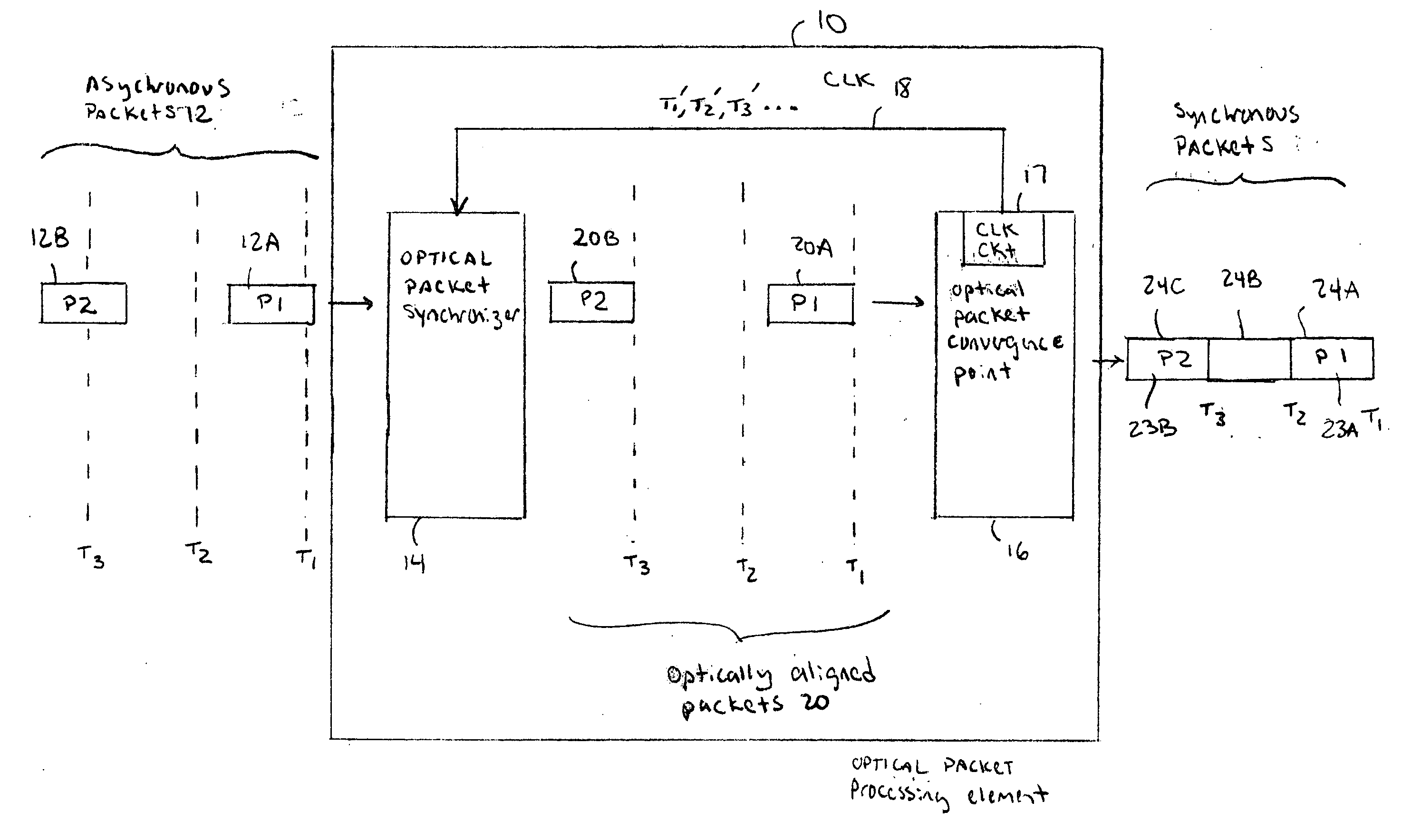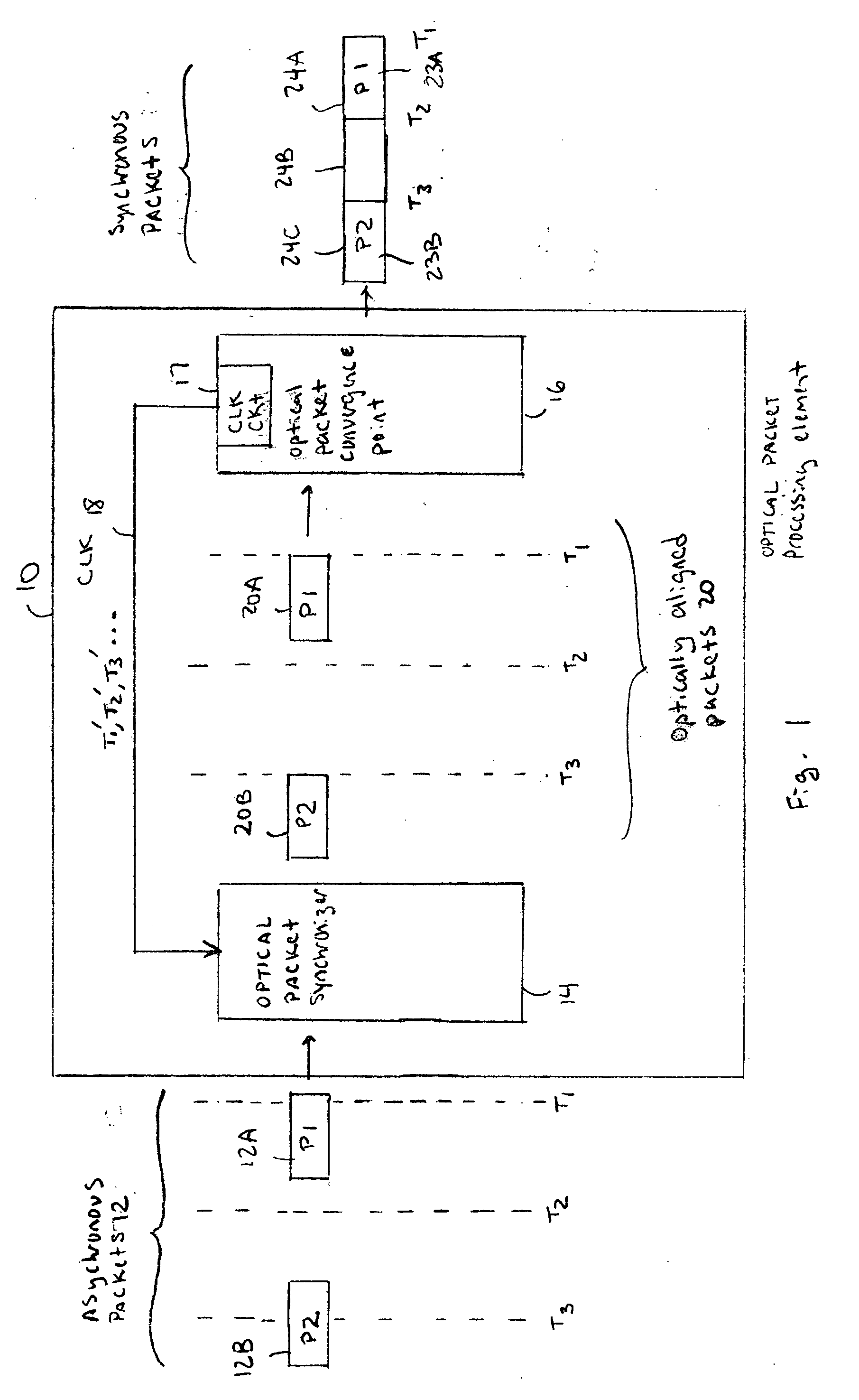Optical data synchronization scheme
a synchronization scheme and optical data technology, applied in multiplex communication, electrical equipment, selection arrangements, etc., can solve problems such as problems such as problems such as problems such as problems such as problems such as no equivalent elastic buffering device, packets present challenges, and problems such as problems
- Summary
- Abstract
- Description
- Claims
- Application Information
AI Technical Summary
Benefits of technology
Problems solved by technology
Method used
Image
Examples
Embodiment Construction
[0015] The area of optical packet switching focuses almost entirely on device-level research. Usually, there is discussion of the blocks required to make a system, without any practical solutions as to how to resolve the problem of gluing different optical components together. The optical packet synchronizer described below provides a system solution for handling asynchronous data in an optical packet processing system.
[0016] It should be understood that the optical packet synchronizer described below can be used in any optical processing device with one or more convergence points that requires synchronous optical data processing of asynchronously received optical data. Optical processing devices using the optical packet synchronizer can be any type of optical packet switch, router, gateway, head-end, firewall, Digital Subscriber Loop (DSL), Time Division Multiplexing (TDM), Asynchronous Transfer Mode (ATM) device, etc. However, for simplicity, the examples below will refer to any ...
PUM
 Login to View More
Login to View More Abstract
Description
Claims
Application Information
 Login to View More
Login to View More - R&D
- Intellectual Property
- Life Sciences
- Materials
- Tech Scout
- Unparalleled Data Quality
- Higher Quality Content
- 60% Fewer Hallucinations
Browse by: Latest US Patents, China's latest patents, Technical Efficacy Thesaurus, Application Domain, Technology Topic, Popular Technical Reports.
© 2025 PatSnap. All rights reserved.Legal|Privacy policy|Modern Slavery Act Transparency Statement|Sitemap|About US| Contact US: help@patsnap.com



